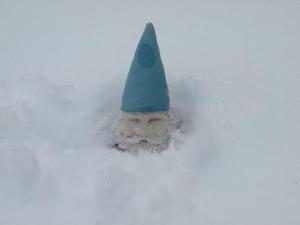What is Novel H1N1 (swine flu)? It is an influenza virus that has never been seen in humans before and is spreading around the world. The virus can spread from people who are infected to others through coughs and sneezes.
What are the symptoms? The symptoms include fever, cough, sore throat, runny or stuffy nose, body aches, headache, chills and fatigue. Many people also have reported diarrhea and vomiting.
How is swine flu different from seasonal flu? The swine flu takes its biggest toll on people younger than 25, pregnant women and people with asthma, diabetes, immune deficiencies and other chronic conditions. Seasonal flu usually takes its biggest toll on the very young and the very old, along with those who have chronic diseases.
How can I protect myself from getting sick? Get vaccinated. Vaccine for seasonal flu is available thought flu clinics, a limited amount of vaccine for swine flu is now available through the towns. Public health experts advise adults and children to get both vaccines.
If I do get sick what do I have to do? If you’re otherwise healthy, don’t have a high fever and are not suffering from any respiratory symptoms (difficulty breathing or shortness of breath; pain or pressure in the chest or abdomen), public health experts recommend staying home, taking fever-reducing medicine, getting lots of rest and drinking plenty of fluids.
When do I have to go to the hospital? Go and see the doctor immediately if in addition to the common flu symptoms (fever, cough, sore throat, runny or stuffy nose, body aches and headache) you also experience: difficulty breathing or shortness of breath; pain or pressure in the chest or abdomen; sudden dizziness; confusion; severe or persistent vomiting.
What does the au pair insurance cover? If you are diagnosed with swine or seasonal flu and you need a special treatment, the cost of any medical exam, hospitalization, medication and other medically necessary treatment will be covered by Au Pair in America health insurance.
PS! Please note – vaccines ARE NOT covered. The seasonal flu vaccine costs around $30.00, the swine flu vaccine is free of charge.
Where can I get flu vaccine? CVS pharmacy “Minute Clinics” are good places to go. They are open 7 days a week and have evening hours.
5 easy steps to stay healthy during the flu season:
•Cover your nose and mouth with a tissue when you cough or sneeze. If you don’t have a tissue, cough or sneeze into your elbow. Throw out dirty tissues immediately.
•Wash hands often with soap and water, especially after coughing and sneezing. Alcohol hand sanitizers are effective as well.
•Keep hands away from your eyes, nose and mouth.
•If you’re sick with flu-like illness, keep away from others to keep from making them sick.
•Avoid close contact with sick people, if possible.
More information about seasonal and swine flu:
Center for Disease Control and Prevention (CDC)
U.S. Dept. of Health and Human Services


